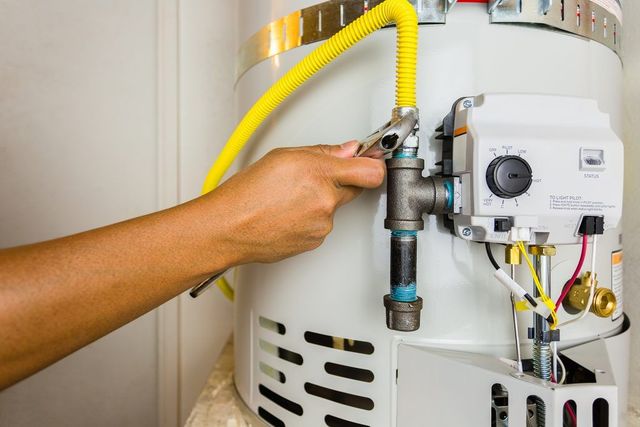Straightforward Methods to Care for Your Home's Hot Water System Properly
Straightforward Methods to Care for Your Home's Hot Water System Properly
Blog Article
Are you on the lookout for critical information about Tips on Maintaining a Water Heater?

Hot water is essential for day-to-day convenience, whether it's for a refreshing shower or cleaning meals. To ensure your warm water system runs effectively and lasts longer, normal maintenance is crucial. This short article provides sensible ideas and insights on just how to preserve your home's hot water system to avoid disturbances and expensive repairs.
Intro
Maintaining your home's hot water system could seem daunting, yet with a couple of easy steps, you can guarantee it operates smoothly for several years to find. This overview covers whatever from understanding your warm water system to DIY maintenance tips and understanding when to contact professional assistance.
Importance of Preserving Your Warm Water System
Regular upkeep not only prolongs the life-span of your hot water system but also ensures it operates efficiently. Overlooking maintenance can cause decreased performance, higher power bills, and also early failure of the system.
Signs Your Warm Water System Demands Maintenance
Understanding when your warm water system needs interest can stop major concerns. Look out for indications such as irregular water temperature level, strange noises from the heater, or rustic water.
Recognizing Your Warm Water System
Before diving into upkeep jobs, it's helpful to understand the standard parts of your hot water system. Usually, this consists of the hot water heater itself, pipes, anode poles, and temperature level controls.
Monthly Maintenance Tasks
Routine regular monthly checks can assist capture minor concerns before they escalate.
Purging the Hot Water Heater
Flushing your water heater eliminates sediment accumulation, enhancing performance and lengthening its life.
Monitoring and Changing Anode Rods
Anode poles stop deterioration inside the container. Evaluating and replacing them when worn out is essential.
Examining and Changing Temperature Settings
Adjusting the temperature settings ensures optimal performance and safety.
Do It Yourself Tips for Upkeep
You can execute numerous upkeep jobs on your own to maintain your warm water system in leading problem.
Looking for Leakages
On a regular basis check pipelines and connections for leakages, as these can lead to water damage and greater costs.
Checking Stress Relief Valves
Evaluating the pressure safety valve guarantees it works properly and avoids excessive pressure buildup.
Insulating Pipelines
Protecting hot water pipes reduces warmth loss and can save power.
When to Call an Expert
While DIY maintenance is valuable, some concerns need professional know-how.
Complicated Issues Calling For Expert Help
Instances include major leakages, electrical problems, or if your hot water heater is regularly underperforming.
Routine Specialist Upkeep Perks
Professional upkeep can include detailed assessments, tune-ups, and ensuring conformity with safety and security requirements.
Conclusion
Routine maintenance of your home's warm water system is important for efficiency, long life, and expense financial savings. By complying with these pointers and understanding when to look for professional aid, you can make sure a reputable supply of warm water without unanticipated interruptions.
Water Heater Maintenance Tips
Test the TPR Valve
Shut off the power and the cold-water supply valve. Place a bucket under the pipe connected to the temperature-pressure-release (TPR) valve on the top or side of the tank. (This valve opens if the tank pressure gets too high.) Lift the valve’s tab to let some water out, then let go. If water keeps flowing, drain the tank partway, unscrew the old valve with a pipe wrench, and install a new one. Check the Anode Rod
Put a hose to the tank’s drain cock and let out a few gallons of water. Now fit a 1 1/16-inch socket onto the rod’s hex head on top of the heater (or under its top plate) and unscrew the rod. If it’s less than ½ inch thick or coated with calcium, buy a new one, wrap its threads with Teflon tape, put it back in the tank, and tighten securely. Use this segmented rod if headroom above the tank is limited. Drain the Tank and Wash Out Sediment
Drain the remaining water in the tank into the bucket, then stir up the sediment on the tank’s bottom by briefly opening the cold-water supply valve. Drain and repeat until clean water comes out of the hose. Close the drain cock, refill the tank, and turn its power back on. Adjust the Temperature
Find the temperature dial on the side of the tank and unscrew its cover. Adjust the dial to 120 degrees using a flathead screwdriver. For every 10 degrees the temperature is lowered, you can expect to save up to 5 percent in energy costs. Turn the water heater off or the thermostat down to its lowest setting if you plan to be away from home for more than three days. Insulate the Pipes
Buy some self-sticking 3/8-inch-thick foam pipe insulation that matches the pipes’ diameter. Slide the foam over the hot-and cold-water pipes as far as you can reach. Insulating the cold-water pipe prevents condensation in summer. Peel the tape and squeeze the insulation closed. If the pipe is 6 inches or less from the flue, cover it with 1-inch-thick unfaced fiberglass pipe wrap. https://www.thisoldhouse.com/plumbing/21016402/how-to-maintain-a-water-heater

I discovered that piece of writing on Tips For Maintaining Your Hot Water Heater when scouting around the search engines. Be sure to set aside a second to promote this article if you liked it. I thank you for your readership.
Visit Link Report this page